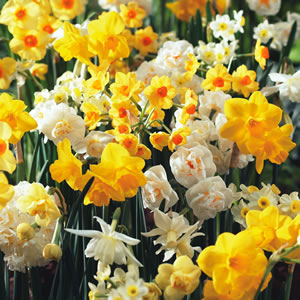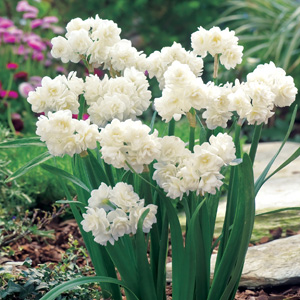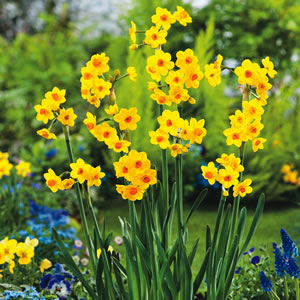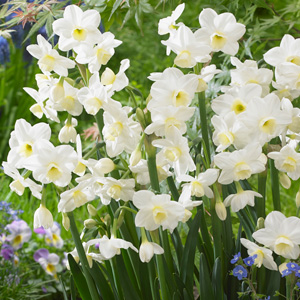Jonquil Growing Guide

What is Jonquil ?
Jonquil (Narcissus tazetta) is a bulbous perennial that is a close relative of the daffodil. It is part of the Amaryllidaceae family and is native to Europe. Jonquils are usually one of the first Spring bulbs to flower, often beginning in late Winter. The foliage starts first that is usually thin, flat, strap like and green to blue green in colour. Late Winter to early Spring the flower stems will emerge. Unlike like daffodils, Jonquils have several flowers per stem. The flower consists of 6 pointed petals with a small cup at the center. Jonquils come in a range of flower colours including white, cream and bright yellow. They are suitable for nearly all climates and are very reliable in warmer climates where normal Daffodils do not grow well. They are equally good in cooler climates where Winters become extremely cold. Jonquils prefer a full sun position in the garden with well drained soil. They have a very distinctive scent.
Benefits of Growing Jonquil
Jonquils are best when planted in clumps. They are great for planting in rockeries, garden beds, borders or pots and will bring that first hint of Spring in late Winter. Jonquils are excellent cut flowers and look fantastic indoors in a vase. The fragrant scented of Jonquil heralds the approach of the warmer months. Keep undisturbed and they are good multipliers which will add an extra dimension to your garden or pots.
How to Grow Jonquil
Climatic Zones
Suitable for all climates except tropical.
Plant Size
Height: 30-40cm, Width: 10-15cm
When To Plant Jonquil
Plant in Autumn.
Soil Preparation
Well drained soil. When planting dig through some compost before planting.
How To Plant Jonquil
Plant in full sun however will tolerate part shade, 15cm apart with the bulb planted at a depth of 12cm below the soil surface with the pointed tip facing upwards. In warmer climates plant up to double the recommended depth.
Jonquil Plant Care
Water bulbs after planting and not again until foliage appear unless experiencing extremely dry conditions. Once buds appears give a good weekly watering. When your plant has stopped flowering, and the leaves begin to turn yellow, stop watering to prevent the bulb from rotting.
Fertilise lightly when planting and after flowering use a commercial bulb fertiliser.
After about 3-4 years bulbs should be lifted, cleaned and stored as clumps are likely to have multiplied and become congested. They will produce poorer quality flowers when this happens. Allow the plant to die right back before lifting the bulb. Bulbs will be gathering energy for the next season up to this point.
Watch out for snails and slugs which will go after the new blooms.
Recommended Jonquil Varieties
Add some colour in the last throws of Winter with Jonquils. Plant es masse to produce pops of colour all around your garden beds.










